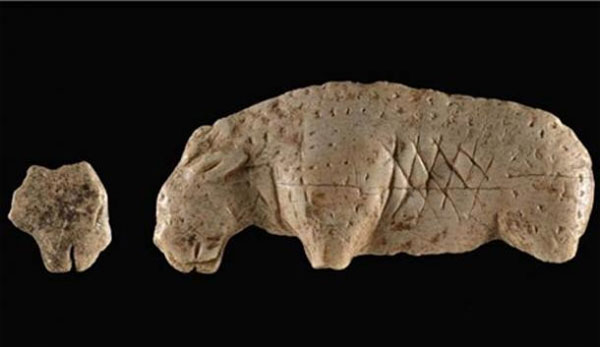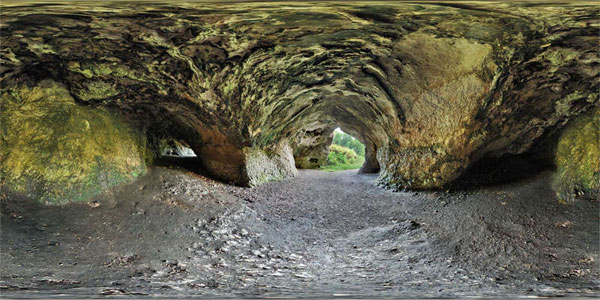Detecting debris from a 40-thousand-year-old mammoth ivory statue
Archaeologists from the University of Tubigen (Germany) found ivory fragments belonging to an animal statue dating to about 40,000 years. The fragments were discovered in the Vogelherd cave area in the southwestern part of Germany, where many significant artifacts have been excavated since the Ice Age.
Previously, about 80 years ago, scientists also found a mammoth ivory fragment describing the shape of a lion. This new debris seems to be the other half of the animal's head, and after being taken for inspection, the statue has been on display at the Museum of the University of Tübingen since July 30.

'This is a statue depicting a lion' - Professor Nicolas Conard, of the prehistoric and medieval archaeological research institute said - 'It can be judged that this is one of the famous artworks of the era The glacier, and until now, we think this is still a unique work that marks the end of the iconic art . This is evident in the 3D structure of the work '.

Volgeherd Cave
Vogelherd Cave covers a wide space of about 170sq.m, which is the place to find the most artifacts of the four caves in this area. Notably, the artifacts here belong to the first modern human era to appear in Europe, and they are the first artifacts to show symbolic art . In 1931, Gustav Riek archaeologist first found these artifacts in a narrow cave, and then had an extensive excavation with the result of many antiques of the Stone Age.
It is worth mentioning that the ivory fragment was found when archaeologists organized a visit to the site of their predecessor who worked in the 30s. GS Conard said: 'We have conducted study this area for about 10 years. The area also contains a lot of ancient artifacts that show that the production of prehistoric creatures developed very early, especially when modern humans moved to Europe and replaced native Neanderthals'. Prof. Conard also pointed out that Vogelherd cave has provided extremely valuable evidence of the earliest presence of music and art in the world in this area, and this is an important factor to bring the cave system This is on the World Heritage List of UNESCO.

Some artifacts made from mammoth ivory excavated from Vogelherd cave
So far, scientists have discovered in Vogelherd cave 24 artifacts or pieces of mammoth ivory pieces, including statues depicting wild horses, bison, reindeer, rhino, mammoths, snow leopard and statue. According to Prof. Conard, these statues are the oldest and most impressive examples of the Ice Age art. So far, they are also the oldest artifacts that demonstrate the emergence of modern humans and previous cultural changes.
- Germany: Detects an 35,000-year-old ivory mammoth
- Found mammoth ivory in the middle of American streets
- Mexico discovered ivory 10,000 years before BC
- Discovered 10,000-year-old mammoth ivory
- Discovered a strange 50,000-year-old crown in Siberia
- Statue of 35,000-year-old nude woman
- Detecting intact mammoth corpses in the North Pole
- America: Finding fossil mammoth fossils
- 42,000 year old mammoth exhibition
- The 700,000-year fossil suspected to be 'precious' mammoth
- Detecting fossil mammoths along the river
- Display of mammoth corpses intact
 Discovered an ancient centipede fossil 99 million years old
Discovered an ancient centipede fossil 99 million years old Discovered bat-like dinosaurs in China
Discovered bat-like dinosaurs in China Discovered a 200-year-old bronze cannon of the coast
Discovered a 200-year-old bronze cannon of the coast Discover 305 million-year-old spider fossils
Discover 305 million-year-old spider fossils